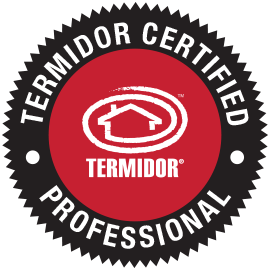Our Pest Control Blog
If you’re wanting to learn more about how to prevent pests in your home, you’ve come to the right place! Check out our articles on the different pests and learn how to best prevent them.
Have you recently discovered small, winged insects around your home or building? Are you concerned they might be termites? If you do have termites in CT, it’s important to act quickly before these small yet powerful pests cause severe damage to your property’s structure.
Seeing a deer in your yard is not a cause for concern most of the time. In fact, there are many wild animals here in Madison that pose little to no threat to humans or their property. That said, there are still several wildlife pests that do cause trouble.
Dealing with cockroach infestations can be a nerve-wracking experience, especially when you reside in Madison, where these persistent pests seem to thrive. However, the good news is that cockroach control in Madison doesn't have to be a pain in the neck.
Carpenter ants are among the most problematic ants a Madison homeowner can handle. These tiny insects can cause no end of issues if you don’t deal with them quickly and decisively, so in this article, we’ll give you all the information you need to do just that.
Having a rat around is not always a bad thing. If you have one of these little furry rodents inside a cage and take good care of it, it won’t be a problem. It is only when rats are allowed to roam freely around inside homes that they start getting into trouble.
Mice can be a problem throughout the year in our area, but fall is one of the most common times for these rodents to invade homes.
In the heart of Wisconsin, Madison homeowners face a recurring challenge: rodent invasions. These small yet destructive creatures pose a risk to property and health. Understanding the significance of effective rodent control in Madison is key to maintaining a safe and healthy living environment.
Ticks can be a big problem for homeowners throughout the United States. These arachnid pests can cause health issues if they aren’t dealt with quickly and removed from your property.
Rodents are crafty creatures. They can adapt to most situations and are essential to our ecosystem. Unfortunately, they can become a significant nuisance if they take over our homes.
Bed bugs can be a challenging and unsettling problem for homeowners in Madison. Achieving successful bed bug control in Madison requires a comprehensive approach combining preventive measures and active eradication strategies.
Mice are more than just a nuisance-they can damage property, chew through electrical wiring, and even spread diseases. And the longer you wait or ignore a potential problem, the harder it can be to fix.
One of the last words a homeowner wants to hear from a pest management professional is termites. Wood-destroying insects like termites can wreak havoc inside a house, causing extensive and expensive damage.
In the United States, carpenter ants are common pests. They breed and nest in damaged, damp, or decayed wood. However, carpenter ants do not eat wood like termites. Instead, they chew and burrow through it to build their nests and connect to their food sources.
Bed bug infestations can cause problems for Madison homes. Once they’ve settled in, professional treatments are often necessary to get them out. ProfExt Pest Control provides pest control services in Madison to get rid of bed bugs for good. Call today to learn more about our options.
Are you dealing with a squirrel problem? If so, you're not alone. Squirrels are one of the most common rodents homeowners deal with in Connecticut. This blog post will discuss how pest control companies get rid of these pesky critters.






